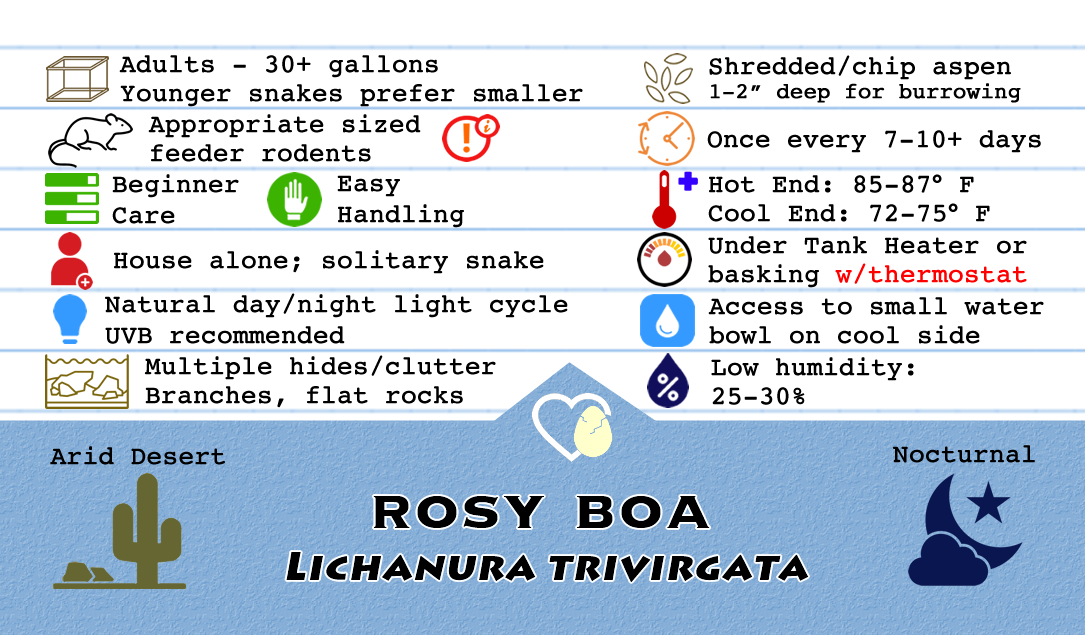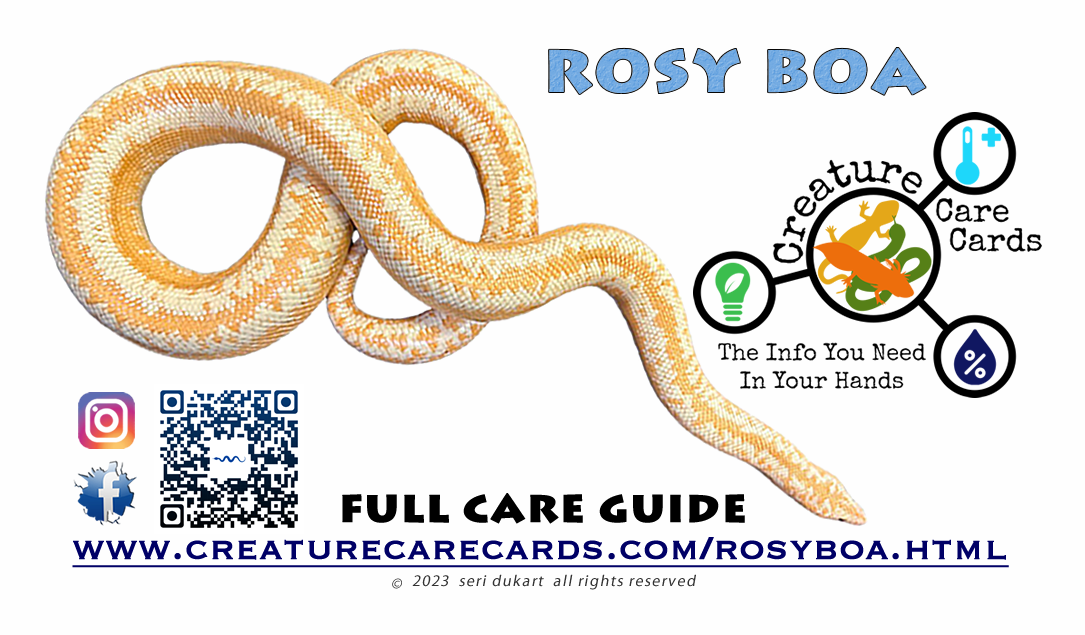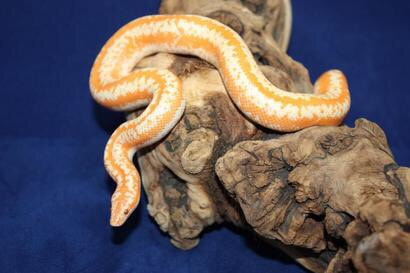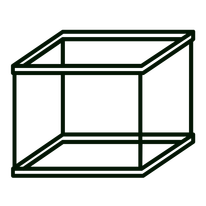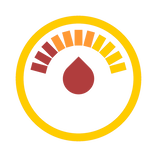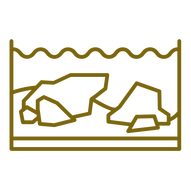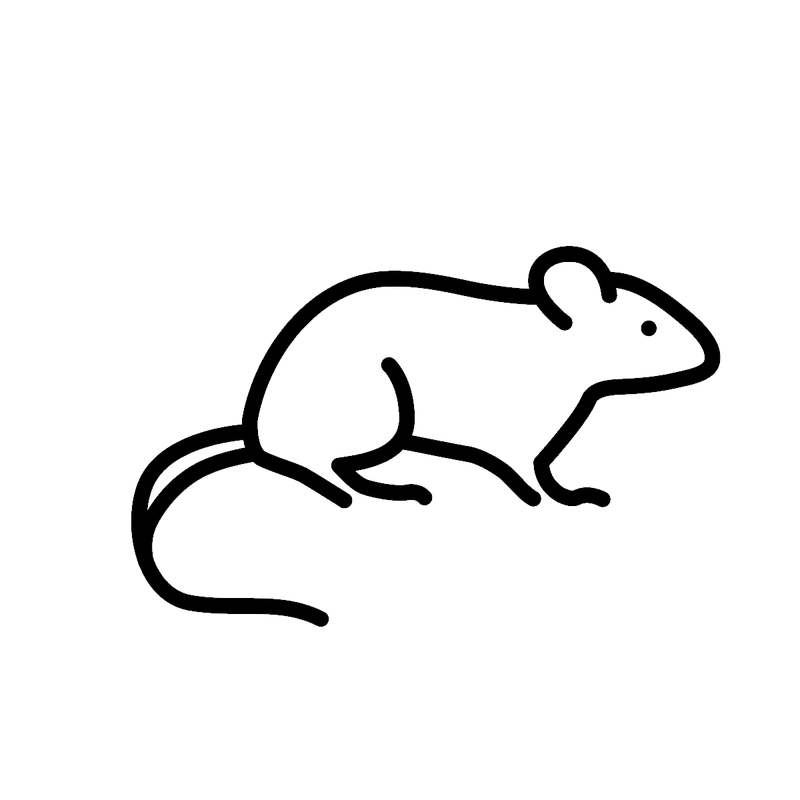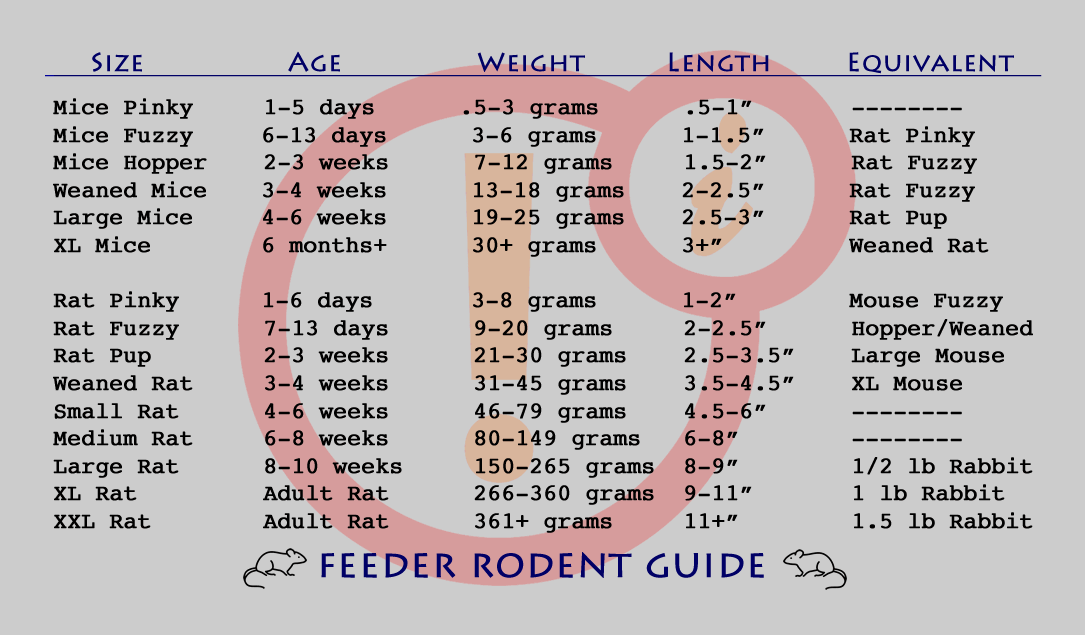Lichanura trivirgata - Rosy Boa
Rosy Boas are a docile, beginner snake that come in a variety of morphs. They are an arid desert, terrestrial snake and are nocturnal, meaning they are most active at night, but they are known to take advantage of basking in the sun during spring daytime hours. They are a burrowing snake and spend much of their time hiding in the substrate.
|
Bringing Your New Pet Home
When you bring your new snake home, you should already have a quarantine tank set up and ready to go. Place fresh water in a bowl in the tank, fresh substrate and offer food, but be aware it is completely normal for them to refuse food for the first couple days, or even longer. You should keep this new snake in a separate area from any other snakes you may have for 90 days, to ensure there is nothing it could spread to your other animals. Check for mites as they are very easily spread to other snakes. Monitor its eating and fecals as they may be strange for up to a couple weeks, but this is due to a new diet, supplements, and environment. It is recommended you do not handle your new snake for the first 24-48 hours and keeping it to a minimum until it has started eating on its own. Always keep in mind, your new animal is in a new tank, with new decor/dishes/hides, and new faces watching them. They need time to become acclimated to it all. After this quarantine process, they can be safely introduced to their permanent enclosure if it's not already. Be sure to wash your hands before handling any other snake during this time. |
|
Enclosure Depending on your need, there are a couple different ways to house a rosy boa. For the single snake owner a glass aquarium with screen lid can be used, or a front opening glass terrarium. Generally you want to have 10 gallons of enclosure for a baby or juvenile, and up to 30 gallons or more for an adult. An additional way to house is a rack system with tubs, most commonly used by breeders to use their space most efficiently. Whatever type of enclosure you choose, be sure it is secure; snakes are escape artists and will use any opportunity to get out and explore. Screen tops with secure clips can be purchased for glass aquariums. Other enclosures should clip securely closed. |
|
Substrate
Rosy boas are very sensitive to humidity, so loose burrowing DRY substrates are a must. Shredded or chipped aspen is an ideal choice as it is low dust and secure for your snake to burrow in. Spot clean weekly and completely replace all bedding every few months. 1-2" deep is recommended to allow them to feel secure and burrow. |
|
Heating
Rosy boas are cold blooded, so they rely on their environment to regulate body temperature. This snake prefers a bit lower temperatures than many. Those temperatures should be around 85-87F on one side of the tank, while the other side of the tank in the 72-75F range so the snake can thermoregulate by moving from one side of the tank to the other. The heat source should ideally come from below the enclosure to aid in digestion and should take up approximately 1/3 of the bottom of the outside of the enclosure. Never put an under tank heater inside the enclosure. Basking spots can also be used. So with a glass or PVC enclosure an under tank heater is best, but for a rack system heat tape is most efficient. A thermostat should be used with any heat source.
|
|
Lighting
Rosy boas are mostly nocturnal, meaning they are active at nighttime hours, especially in captivity. They should be exposed to 10-12 hours of light per day. Reptiles benefit from UVB lighting, and it offers many health benefits. Lights should be placed on a timer to be sure they have a natural day and night light cycle. |
|
Cage Decor
Since they are inactive during the day time, they need to have places to hide from the daylight to sleep. These hides can be as fancy as you prefer, from something store bought to an overturned plastic container with a door cut out. There should be at least 2 hides, one on the cool side and another should be kept on the warm side. Rosy boas like it cluttered, so the more hides and tight spaces they have, the better. Low branches, rocks, cork pieces and fake plants can be added to the tank for visual appeal and for your snake to explore and use to aid in shedding! |
|
Humidity and Shedding
Rosy boas are an arid desert species, so they require low humidity. Levels should be around 25-30%. This species is especially sensitive to humidity, so avoid humid hides or large water bowls and make sure there is plenty of ventilation. Snakes will shed their skin as they grow. You’ll notice their color will appear dull when they are about to shed and their eyes will take on a blue tint. They cannot see well during this period of time, so may refuse food and strike in defense. A snake should shed in one complete piece - if they shed in pieces or have pieces stuck to them, your humidity needs to be adjusted. |
|
Water
A small water bowl on the cool side of the enclosure is all this snake requires. Some keepers will offer them large bowls to soak in once a week. These opportunistic snakes will take advantage of your offering and soak if they need to. Avoid offering water in the days after feeding to avoid regurgitation. |
|
Feeding Rosy boas are carnivores and kill their prey by constricting it. Typically, their diet consists of mice. Depending on the breeder and how they were raised, some may only take live prey. If this is the case, be sure to never leave your snake alone with the live prey as they can be severely injured. Frozen/thawed prey is the best choice for the average pet owner as it is readily available at most pet stores. Thaw the prey to room temperature by soaking in a bowl of lukewarm water, or leaving it out for a few hours to thaw. Never use a microwave to thaw food for a snake. Size of prey offered depends on the size of your snake. The size of the prey item should approximate the width of the snake at the largest part of its body. As your snake grows, so should the size of the prey offered. Most adult snakes eat every 10-12 days or even every 14 days. Babies and juveniles need to eat more often. Rosy boas can be picky eaters, so don't be alarmed if your snake refuses a meal or two, but check that your temperatures, humidity and enclosure setup is proper. The best way to feed a snake is using a rubber tipped tongs to dangle the prey in front of them until they strike for it. Feeding at night will greatly improve the chances of a successful feed. |
|
Handling
Rosy boas are usually open to being handled and with regular contact, can become very tame. Hold your snake in your hands securely and let them explore. Never handle a snake that is about to shed unless necessary, as their eyesight is compromised and the chances of being bitten or struck at are higher. Do not handle your snake for 2-3 days after feeding to allow them to properly digest their meal. Handling too soon can cause regurgitation. If you are unsure about taking your snake out of the enclosure, snake hooks or tongs are handy for aiding in handling. Be sure to support the entire snake, using the hook to support the area closest to the head and your hands to support the rest of the body. |
|
Shopping List
*optional |
